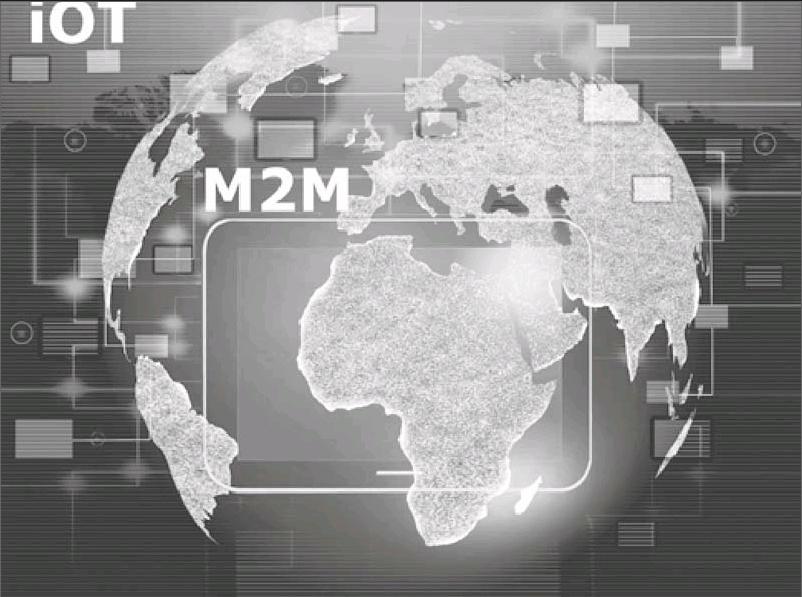China’s Internet of Things Set to Take off



In 2014, the value of Chinas In- ternet of Things industry totaled 580 billion yuan, or 90 billion dollars, up 18.46% on an annual basis, according to a report issued by the Xinhua News Agency on September 24, 2015.
The report was released at the Sixth Annual China International Internet of Things Expo, which was held from September 24 to 26 in Wuxi city, East Chinas Jiangsu province.
The Internet of Things (IoT), which is also known as the Web of Things, is a computing concept that describes a future where everyday physical objects will be connected to the Internet and be able to identify themselves to other devices.
In China, there are four IoT industry centers, respectively located in Yangtze River Delta, Pearl River Delta, Bohai Rim, and central and western China, with Yangtze River Delta taking the lead in terms of industrial scale.
The report said the IoT has become a powerful driving force of innovation and economic growth in China where IoT technologies are integrating with both traditional industries like agriculture and manufacturing and rising industries such as new energy and new materials.
The report also listed major challenges facing Chinas IoT, including its reliance on importation of sensor and chip technology, problems in application, information and data security.
IoT: New Driving Force for Innovation & Economic Growth
Since 2013, the concepts of IoT and Machine to Machine (M2M), as well as Industry 4.0, have always been mentioned with relish and the global manufacturing market has stepped up effort to bump up the IoT industry, especially the “Factory of World”, China.
In a faster-is-always-better world, the IoT, which connects traditional devices, such as wearables and home appliances, to the Internet, makes it possible to collect, record and analyze new data streams faster and more accurately.
The IoT becomes a new darling of the technology world where more and more people are tethered to electronic devices. In China, the new emerging in- dustry is booming. The Global System for Mobile Communications Alliance(GSMA) said that China is the worlds largest M2M market with 74 million M2M connections and has now become the global leader in the deployment of the IoT.
According to a reported issued in July by the GSMA, the combination of a strong economy, far-sighted government investment and international cross-sector partnerships enables the IoT to reach scale quickly in the country.
According to Alex Sinclair, GSMAs chief technology officer (CTO), Chinas size offers economies of scale unavailable to other countries, but its been the governments focused strategy, emphasis on common specifications and crosssector collaboration that has allowed the IoT to scale, delivering positive benefits to businesses and consumer alike.”
He said: “Connectivity is boosting major industries such as logistics, manufacturing and energy in terms of increased efficiency, but it has also created a new consumer market in areas such as connected vehicles, home appliances and wearables, putting China at the forefront of IoT deployment.”
Chinas leading mobile operators, China Mobile, China Telecom and China Unicom, are at the vanguard in the development of the IoT and are moving from a business-to-business focus to offering more sophisticated consumeroriented propositions via partnerships with other companies such as automotive makers and wearables companies.
They are also forging both domestic and international partnerships with vendors and manufacturers to bring the benefits of connectivity to a wide range of machines, vehicles and devices.
Beyond the supply of ubiquitous, high-performance connectivity, operators are working to standardise plat- forms, simplify business processes and provide value-added services such as security, authentication and billing.
Connected World
The central government has selected 202 cities, including Beijing, Guangzhou, Hangzhou and Shanghai, to pilot smart city projects to collect, store and analyze information related to transportation, electricity, public safety and environmental factors.
Sectors such as transportation, energy, logistics, utilities and manufacturing have all benefited from the realtime information provided by mobile connectivity to increase efficiency, lower costs and manage infrastructure.
With millions of Chinese consumers now owning multiple connected devices and experiencing the IoT in their daily lives, the countrys consumer market has also experienced incredible growth,
The wearables market in particular is a hotbed of innovation, with thousands of products available at accessible prices, including smart watches, tracking devices and fitness bands with built-in connectivity.
The connected car market is also growing apace, driven by the increasing availability of 4G network coverage which is providing a range of in-car services such as entertainment, navigation, safety and vehicle diagnostics. Machina Research forecasts that the number of connected devices, such as vehicle platforms, providing services within the connected car sector will increase from 16 million in 2015 to 67.9 million in 2020 and to 130 million by 2024, giving China the largest growth in the connected car market after Russia in the BRIC countries.
China has benefited from proactive government support in the development of the IoT with funding allocated as part of the countrys 12th Five-Year Development Plans and additional funding made available for research and development.
China has also led in the development of standards, establishing an IoT standards association and promoting Chinese-developed standards internationally. Adoption of essential industry specifications and guidelines, such as the GSMA Embedded SIM Specification and the IoT Device Connection Efficiency Guidelines, will enable further growth and scale.
Big Potential
The Internet of Things (IoT) could deliver economic gains in China of up to dollars1.8 trillion in cumulative Gross Domestic Product (GDP) by 2030, according to a report from Accenture, a management consulting, technology services and outsourcing company.
Accentures report, titled “How the Internet of Things Can Drive Growth in Chinas Industries”, was published at the World Economic Forums Annual Meeting of New Champions 2015.
The report also noted the potential gains are at risk due to challenges in infrastructure, data policy and talent. Nowadays, watches, fridges and even dog collars are connected to the Internet and these devices are generating an unrelenting wave of data, which inevitably leads to some privacy concerns over how the data is collected and used.
The report shows that based on current policies and investment trends, the IoT could add about 500 billion dollars to Chinas cumulative GDP by 2030. This would result in Chinas GDP being 0.3% higher in that year compared with current projections.
By taking additional measures to improve its capacity to absorb IoT technologies and increase IoT investment, China could boost its annual GDP by 1.3% by 2030, cumulatively adding 1.8 trillion dollars to the economy by that time.
Accenture said in the report that Chinas manufacturing sector will benefit by 196 billion dollars in its cumulative GDP contribution in the next 15 years, based on the countrys current policy and investment trends.
But that could jump by 276% to 736 billion dollars as a result of the enhanced measures advocated by the report. Meanwhile, the public sector could see an increase in cumulative output from 61 billion dollars to 217 billion dollars.
A similar increase could be seen in the resources sector, with its contribution to cumulative GDP rising from 48 billion dollars to 189 billion dollars under enhanced measures, almost three times higher than under current conditions.
Gong Li, chairman of Accenture Greater China, said: “Chinese business leaders and policymakers cannot assume that the country will automatically enjoy strong economic growth thanks to the IoT.”
He added: “To make such an expansion possible, they must shift their attention away from the technology itself and toward the conditions that enable the technology to be widely adopted through all parts of the economy. The governments ‘Made in China 2025initiative provides a strong basis, as the IoT will be most relevant to advanced and intelligent manufacturing.”
Today, however, China faces new challenges as wages and other factor costs rise, value chains become more complex, and consumers grow more sophisticated and demand.
Moreover, these pressures are rising against the backdrop of a more fundamental macroeconomic reality: the almost inevitable decline in the relative role of manufacturing in China as it gets richer. Manufacturing growth is slowing more quickly than aggregate economic growth, for example, and evidence suggests that China is already losing some new factory investments to lower-cost locations, such as Vietnam, sparking concern about the countrys manufacturing competitiveness.
In order to better turn those challenges into opportunities, and further promote the manufacturing industry in China, China government has put big investment and attention on industry 4.0 initiatives.
In August 2013, the Ministry of Industry and Information Technology(MIIT) of China had released the “Five Years Plan (2013 – 2018) of Deep Integration of Informatization and Industrialization” to optimize the industrial structure and achieve industrial upgrading in China.
Moreover, on October 10, 2014, China and Germany announced in the Action Outline for China-Germany Cooperation that the two countries will carry out the cooperation in "Industry 4.0", which is expected to become the new direction of China-Germany industrial cooperation in the future. The action outline was issued after the third round of China-Germany inter-governmental consultations
As concrete measures to promote China-Germany cooperation in “Industry 4.0”, the two sides have specified the leading institutions responsible for carrying out the cooperation in the field, and decided to establish the ChinaGermany “Industry 4.0” dialogue. Both sides welcome enterprises of the two countries to conduct voluntary, equal and mutually beneficial cooperation in the field, and support enterprises and groups as well as trade associations of the two countries in enhancing communication. Thus, the two governments will provide more favorable framework conditions and policy support, and conduct more systematic and strategic cooperation focusing on “Industry 4.0” under the framework of ChinaGermany Standardization Cooperation Commission.
The two sides will take the opportunity of China acting as the coopera- tion partner of the 2015 Center for Office Automation, Information Technology and Telecommunication (CeBIT) in Hanover, Germany to further deepen the bilateral cooperation in such fields as mobile Internet, Internet of Things, cloud computing, and big data.
Actually the four stages of “Deep Integration of Informatization and Industrialization” has well reflected how China will execute on German industry 4.0 initiatives and give more complementary focus according to the countrys real status.

